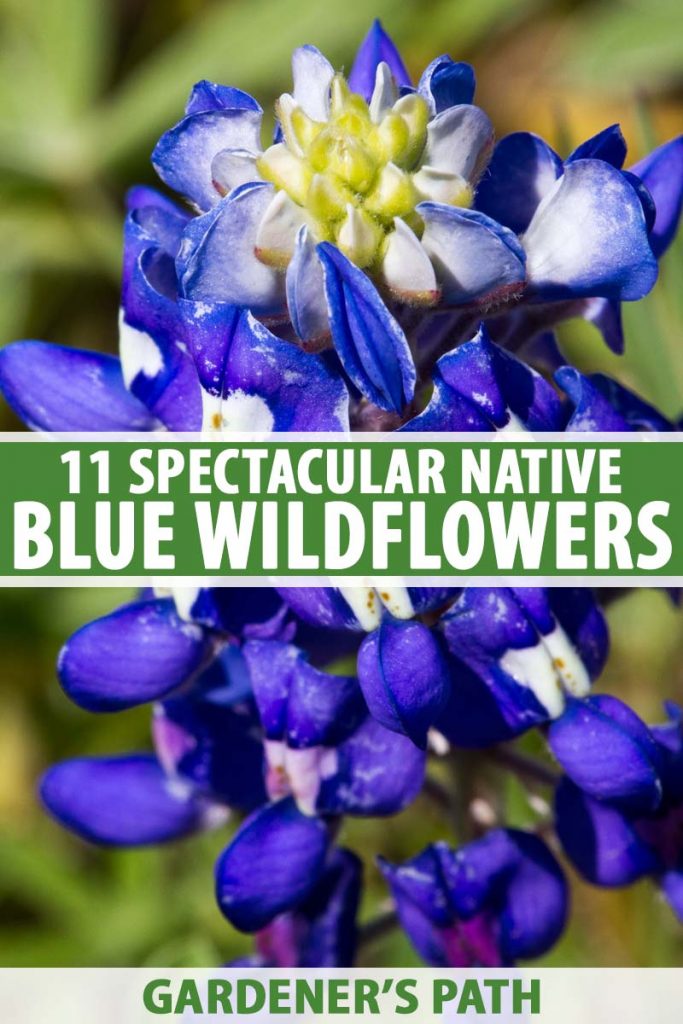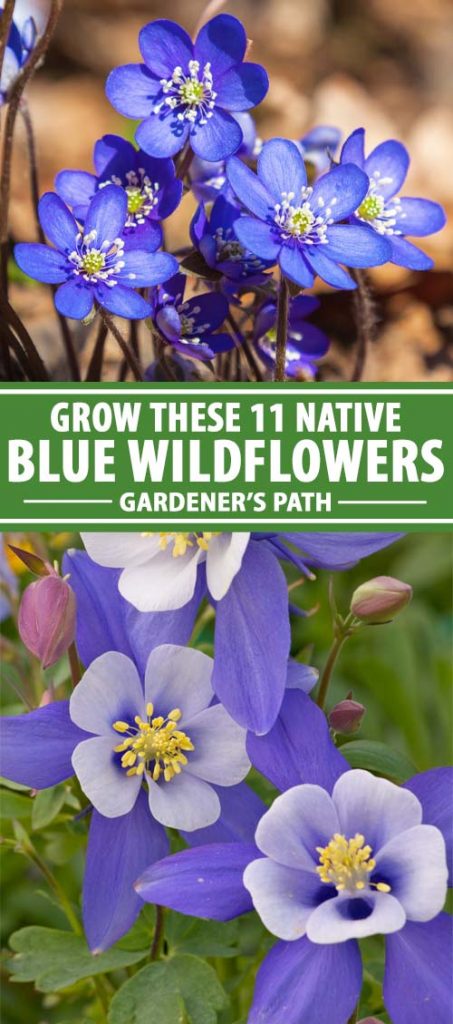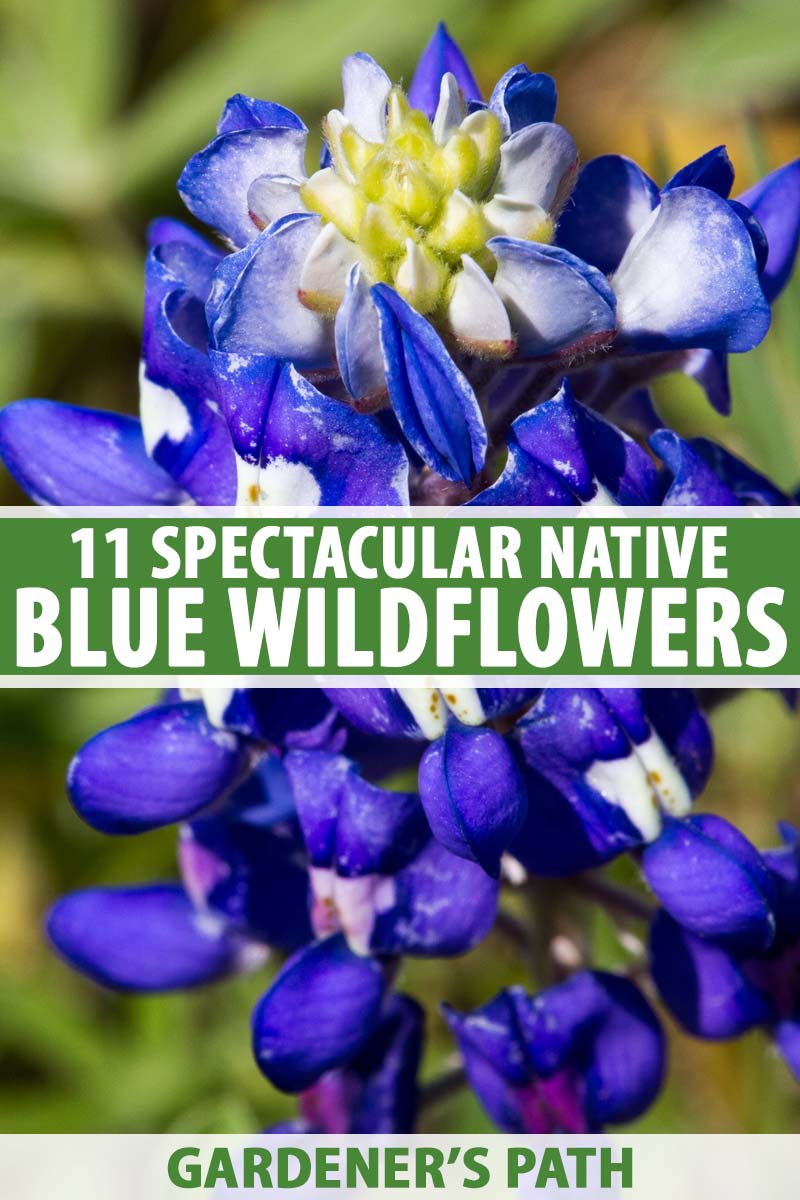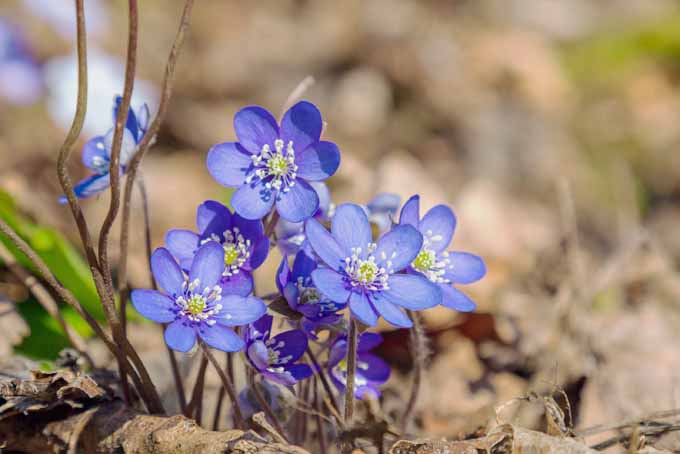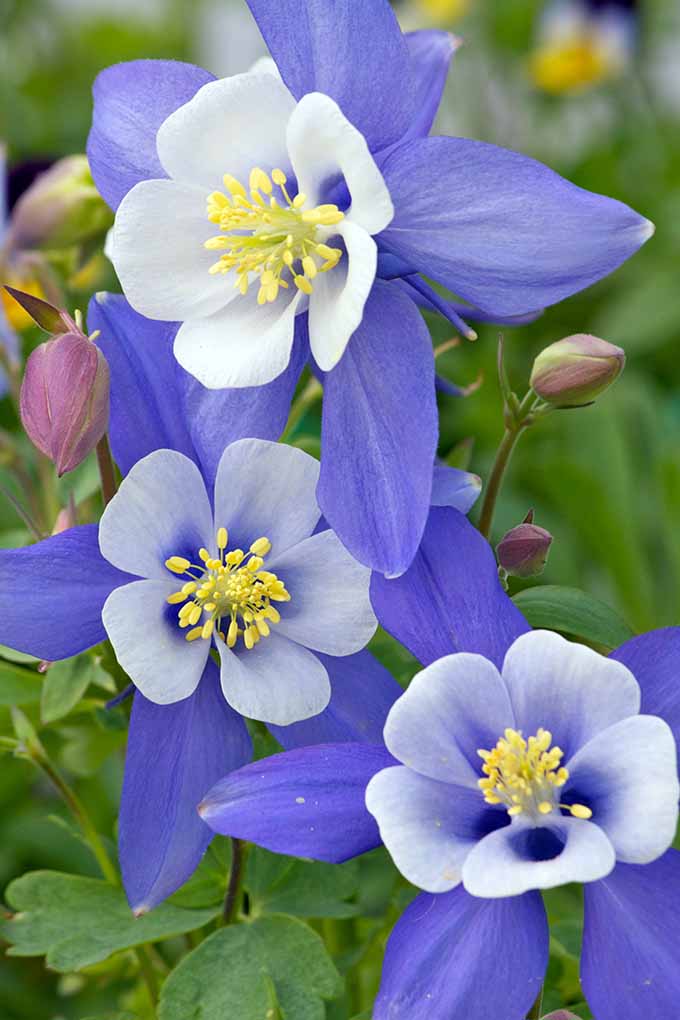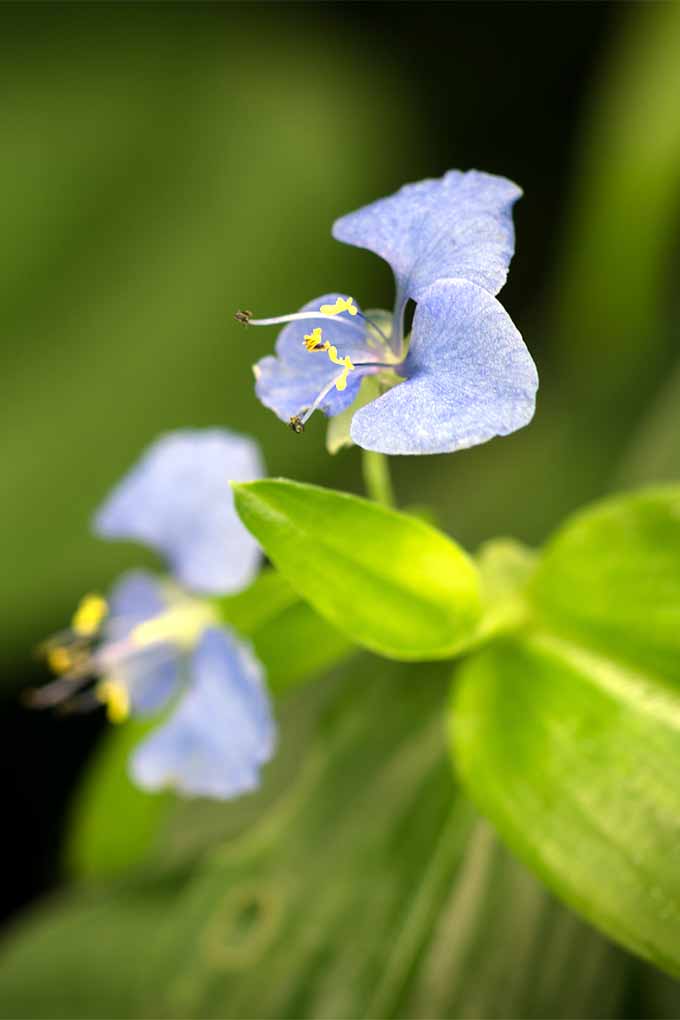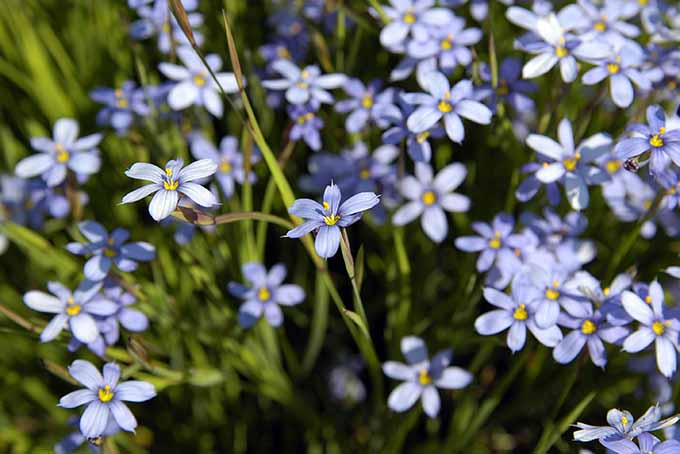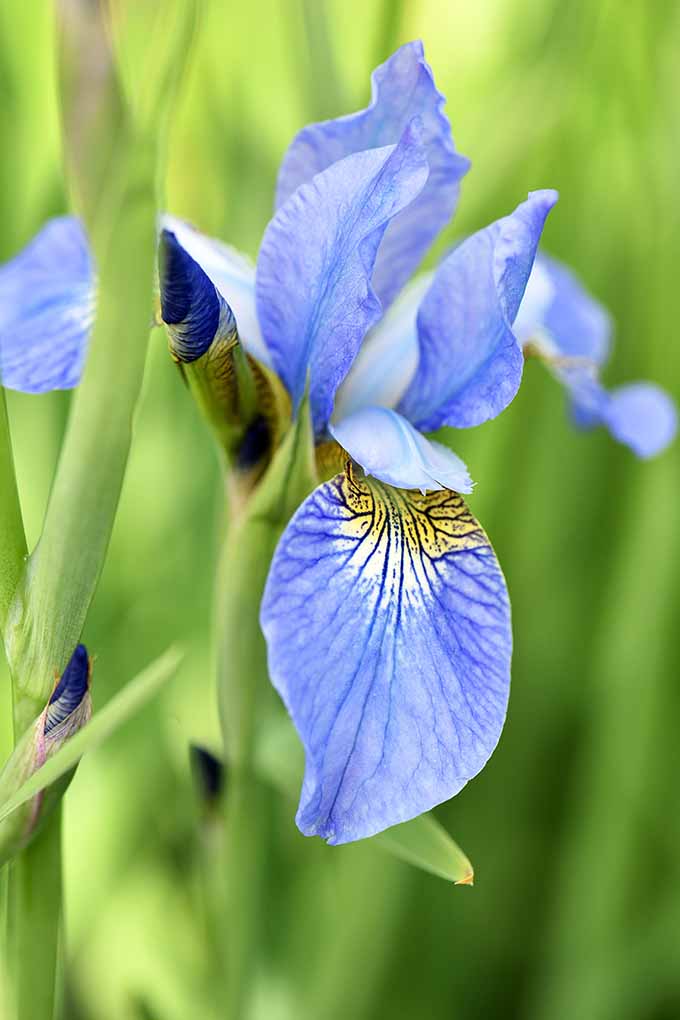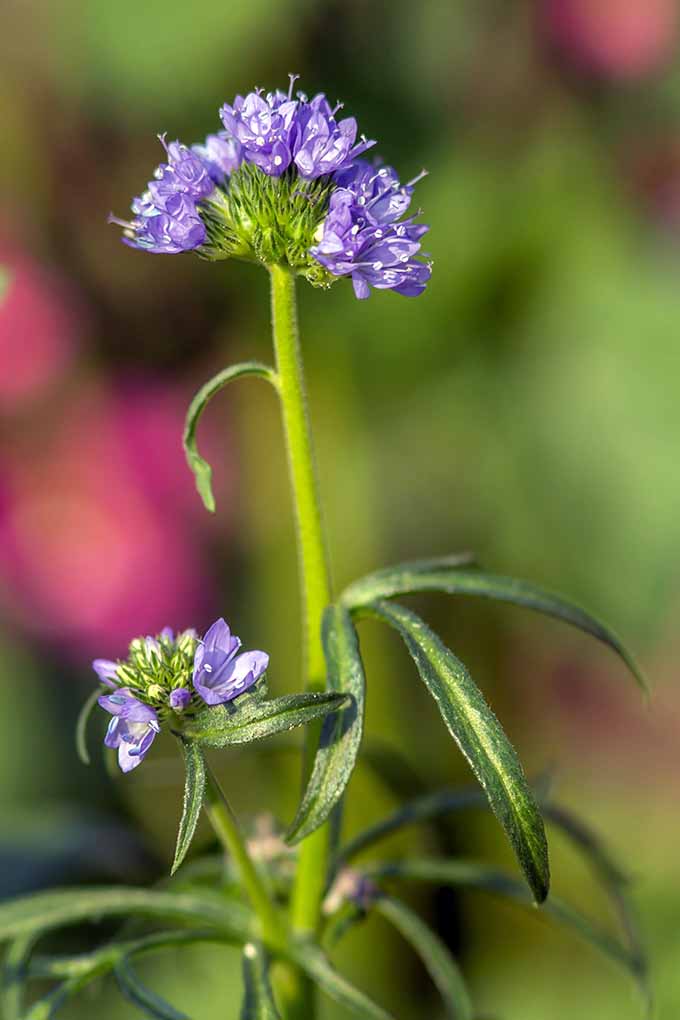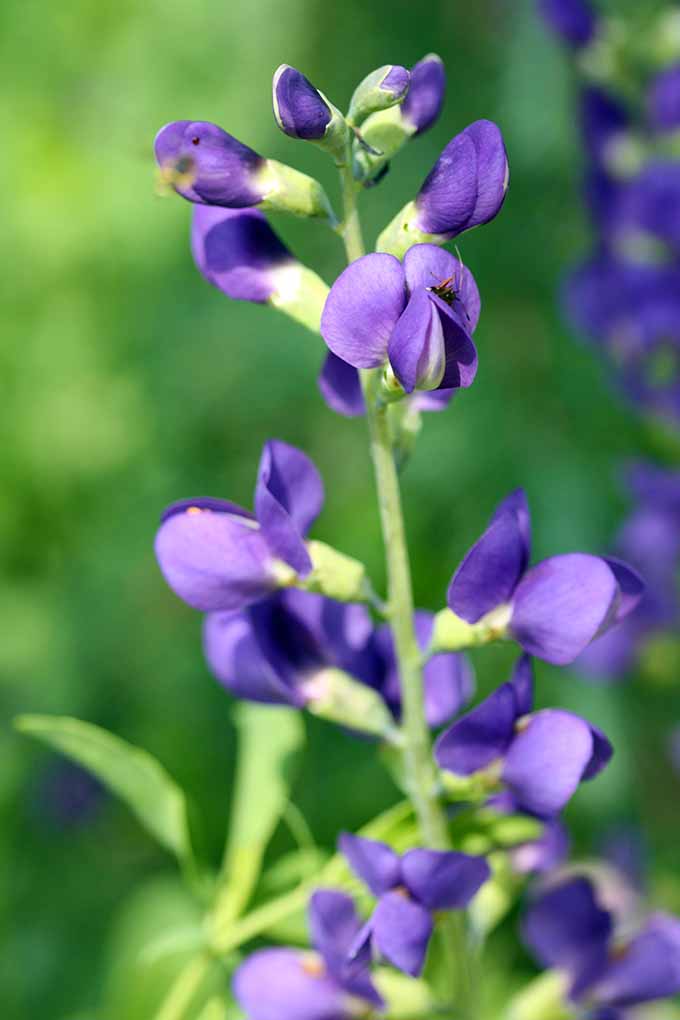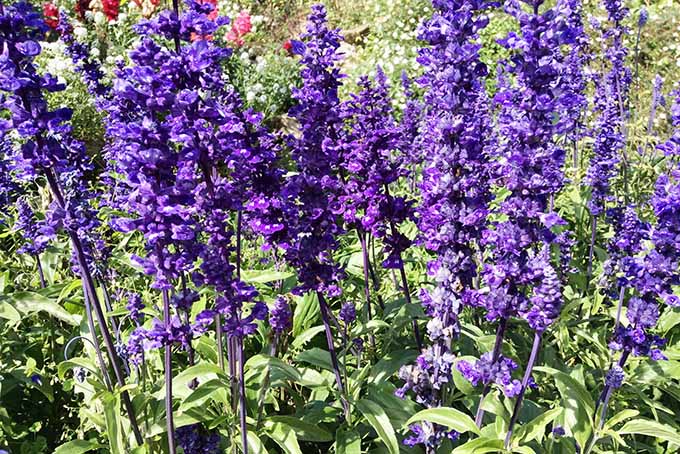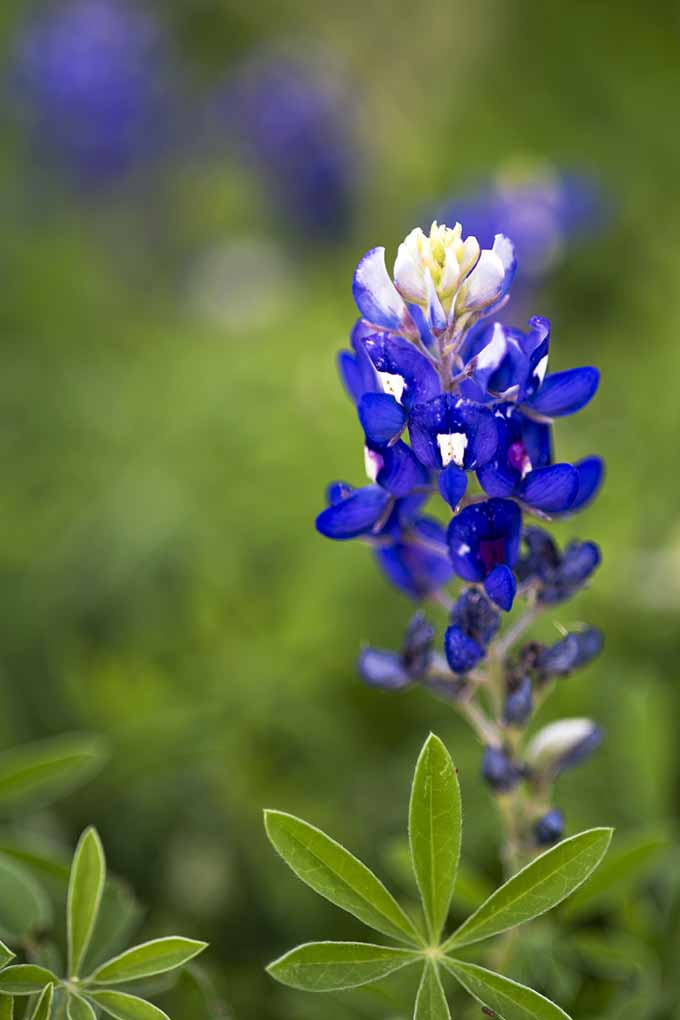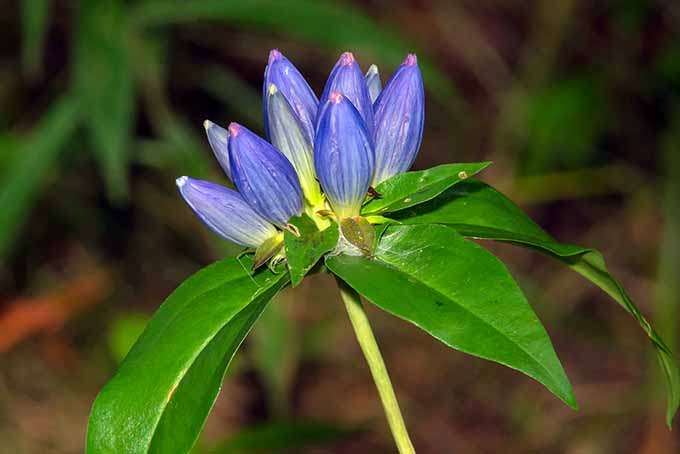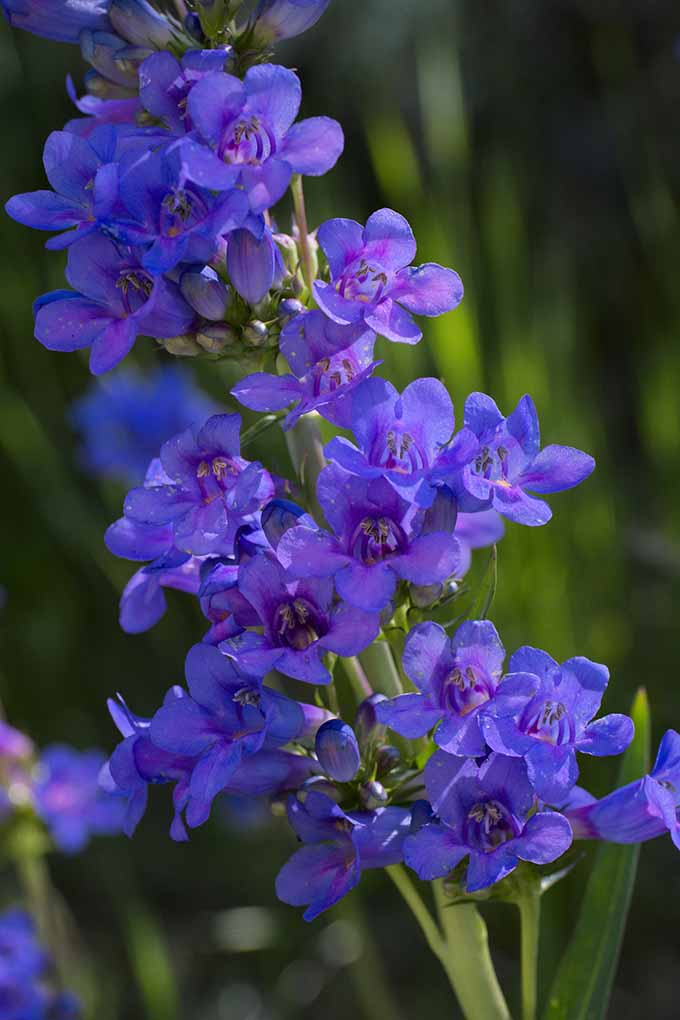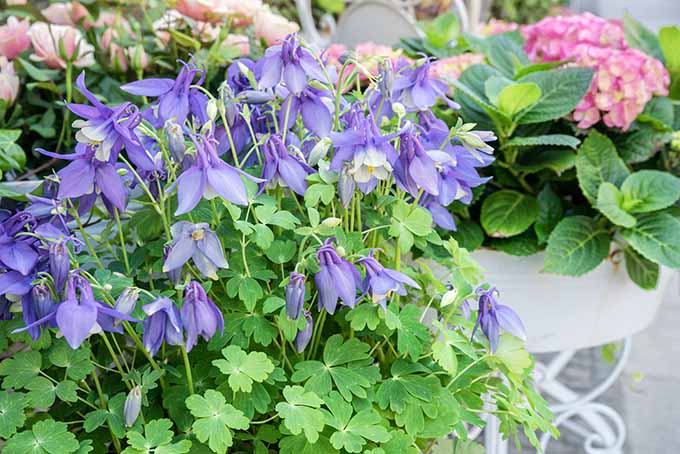Whether your color scheme is pinks and reds, yellows and oranges, or an eclectic mix, the addition of blue – at random or as a focal point – wakes up a garden. The plants listed are all native to the US and do exceptionally well in their appropriate regions. This means less watering and maintenance for you, and better habitat for animals like birds, bees, and butterflies and other pollinators. We link to vendors to help you find relevant products. If you buy from one of our links, we may earn a commission.
Tone It Up with a Touch of Blue
The native plants we’re about to discuss are not on the USDA’s Federal Noxious Weeds List, ensuring that they are environmentally advantageous additions to home gardens. They’re listed by their common names, with Latin names in parentheses. Those listed as perennials may behave as annuals in states with colder climates, re-sowing themselves by dropping seed, as opposed to overwintering in a dormant phase. Choose plants that not only appeal to you, but that are appropriate for your locale. A US native flower is one that originates in one or more of our states. Where we find it growing in the wild, we call it a wildflower. It may be an annual that reseeds itself, or a perennial that comes up every year. When we take this flower and grow it successfully in other regions, we are able to assign a hardiness zone to this native plant. In these other zones, we may call it a wildflower – but it may or may not need our help to thrive. The following flowering plants are all native to a particular region of the US, where they grow in the wild. They may also be cultivated outside their native regions as either annuals or perennials, depending upon the temperature. In addition, plant breeders develop new hybrids and cultivars every day. So, as you shop for these exquisite flowers, look for the Latin names, common names, and the words “native” and “blue” to get the best version of each plant for your area.
If you don’t already know your hardiness zone, use the USDA’s Plant Hardiness Zone Map to find it. Use this information as a guide in choosing varieties that will thrive in your region.
1. Common Hepatica (Hepatica americana)
The common hepatica is known by various names, including blue anemone, liverleaf, and mayflower. Common Hepatica is native to the southeastern US. It’s a charming wildflower that grows close to the ground in woodsy settings, where there is partial shade and rich, well-drained soil. It’s an herbaceous plant, with stems, leaves, and flowers that die at the end of the growing season. It’s also a hardy plant, whose roots lie dormant beneath the soil throughout the winter.
Plant Facts:
6 inches tall Blooms in early spring Blue, white, or pink Easy to grow Medium moisture, rich, well-drained soil Occasionally fragrant Part shade Perennial Zones 3 to 8
Where to Get It?
Most home improvement stores should carry it in the wildflower area of their seed displays.
2. Colorado Blue Columbine (Aquilegia caerulea)
Colorado blue columbine is a wildflower native to the Colorado Rocky Mountain region that thrives in moist, well-drained soil. This hardy herbaceous perennial does best in the sun or partial shade of cooler climates. It is the Colorado state flower, and a protected species. Colorado blue columbine may succumb to the heat of areas with hot summers after just a few years, usually because the soil isn’t moist enough. However, it self-propagates by scattering seeds that grow into new plants, much like an annual.
Plant Facts:
2 to 3 feet tall Blooms in late spring Blue with white Full sun to part shade Moderately challenging to grow Moist, well-drained soil Perennial Unscented Zones 3 to 8
Where to Get It?
Grab a packet of 60 ‘Blue Star’ columbine seeds from Burpee.
3. Virginia Dayflower (Commelina virginica)
This three-petaled wildflower has clusters of flowers at the end of each stem that open in the morning and close at noon, lasting one day only. It is a hardy herbaceous perennial commonly found in moist ground in the eastern US. It has a long growing season ranging from late spring to late summer. Sometimes reaching three feet in height, Virginia dayflower self-sows as it drops spent blossoms. Trimming leggy or withering foliage helps to maintain shape and promote blooming. Given room, the rhizome root system of this plant may spread extensively.
Plant Facts:
1 to 3 feet Blue Easy to grow Late spring to late summer Moist soil like that of wetlands and river banks Perennial Full sun or shade Unscented Zones 5 to 10
Where to Get It?
4. Narrowleaf Blue-Eyed Grass (Sisyrinchium angustifolium)
This plant is not a true grass, but a member of the iris family, native to the eastern US. Known also as Bermuda blue-eyed grass as well as Lucerne, it makes a sweeping meadow of blue, with clumps of slender green leaves, each sporting one flower per stem. It’s an herbaceous perennial that’s perfect as a border plant, and hardy in its appropriate zones. Give common blue-eyed grass room to roam, dividing clumps to thin as needed over the years. It likes moist soil and good drainage, and tolerates some shade.
Plant Facts:
1 to 2 feet Easy to grow Late spring to early summer Perennial Rich, moist soil Sun Unscented Violet blue Zones 4 to 9
Where to Get It?
It’s available from one of our favorite plant nurseries, Nature Hills. Here’s the link.
5. Northern Blue Flag Iris (Iris versicolor)
The northern blue flag iris is native to the eastern US. This herbaceous perennial loves to have wet feet, and thrives in marshes and pond borders. It’s a wildflower that grows in clumps with two-foot stems topped by showy blossoms. The blue flag is a hardy plant that requires shallow planting, with a bit of thick rhizome root showing. It needs space between plants for air circulation to inhibit rotting, a common iris problem. Note: This plant is toxic. Handling the rhizomes may cause skin irritation, so wear gloves.
Plant Facts:
2 to 3 feet tall Violet blue Early summer Moderately challenging Wear gloves to handle rhizomes Perennial Full sun to partial shade Unscented Wet soil like wetlands and river banks Zones 3 to 6
Where to Get It?
You can find potted bulbs at Nature Hills Nursery.
6. Bluehead Gilia (Gilia capitata)
Known also as globe gilia and Queen Anne’s Thimble, this bushy, multi-branching annual is native to the western US, and may be planted in all US zones. Its light blue pom-pom flowers and dense foliage make a refreshing statement in rock gardens. This annual wildflower is a member of the phlox family with the ability to reseed itself, coming up year after year like a perennial. It’s drought tolerant, making it a good candidate for xeriscaping. Bluehead gilia is not particular about soil condition, and self-sows.
Plant Facts:
Annual Average to dry well-drained soil Easy to grow Full sun to part shade Late spring to early summer Lavender blue Scented Up to one foot tall Zones 3 to 10
Where to get it?
Various quantities are available via Eden Brothers.
7. Blue False Indigo (Baptisia australis)
Blue false indigo is a large, clumping perennial, native to the eastern US, that looks great at the back of a border. It has small violet-blue blossoms in clusters called racemes, which are elongated like that of the larkspur or delphinium. It is a majestic wildflower with deep roots that shares space companionably with neighboring plants. Give it time to establish, and you’ll have a stunning landscape scheme. Divide roots during dormant periods to thin plants. Note: Toxic.
Plant Facts:
2 to 4 feet Blue violet Easy to grow Early summer Perennial Sun to part shade Unscented Medium moisture, any soil Zones 3 to 10
Where to Get It?
We recommend sourcing it from Nature Hills Nursery.
8. Mealy Cup Sage (Salvia farinacea (Lamiaceae))
This drought-tolerant wildflower is a hardy herbaceous perennial native to the soils of the south-central US, including Texas and Oklahoma. In colder climates, it grows exceptionally well as an annual. Blue sage grows tall in full sun, often stretching its flower-laden stalks to four feet. When deadheaded, it blooms intermittently throughout its long growing season.
Plant Facts:
Average soil Easy to grow Full sun Low moisture Perennial in warmer areas, annual in cooler Scented Spring to autumn Up to 3 feet tall Violet blue Zones 3 to 10
Where to Get It?
Nature Hills Nursery stocks a superior strain called “Salvia Evolution” and you can find it on their website.
9. Texas Bluebonnet (Lupinus texensis)
The official state flower of Texas, the Texas bluebonnet is a native that glories in dry soil and abundant sunshine. To see a field of them waving in the breeze is nothing short of breathtaking. Reaching three feet in height, this herbaceous annual is a member of the lupine family. It’s topped by clusters of cobalt flowers with white tips. Texas bluebonnet forms an intricate rhizome root system that may benefit from soil treated with a rhizobium, to inhibit damaging bacteria. Note: Toxic.
Plant Facts:
1 to 3 feet tall Cobalt blue with white Full sun Low moisture, well-drained soil Consider adding rhizobium Moderately challenging to grow Perennial in warmer areas, annual in cooler Scented Spring Zone 3 to 8
Where to Get It?
Various quantities are available via Eden Brothers.
10. Bottle Gentian (Gentiana andrewsii)
Native to the northeastern US, the bottle gentian is an herbaceous perennial with a unique bud-like blossom that doesn’t open as most flowers do. That’s why it has another name: the closed gentian. This wildflower is relatively easy to grow. Keep in mind that while it likes moist soil, it doesn’t like to be water-logged. It may reach two feet in height, and does best with neighboring plants or stakes to lend support.Protect tender seedlings from foraging animals, and then stand back and watch this beauty bloom until the first frost.
Plant Facts:
1 to 2 feet Late summer to autumn Blue Easy to grow Moist, not soggy; any soil Perennial Full sun to part shade Unscented Zones 3 to 6
Where to Get It?
11. Wasatch Gentian (Penstemon cyananthus)
This native of Utah’s Wasatch Mountains is a hardy herbaceous perennial that thrives in sandy soil with little water. Known also as Wasatch beardtongue, this wildflower is a biennial, so be patient. In two years, you’ll have 18-inch spikes with dense clusters of bright blue tubular blossoms that are sure to be the envy of your neighborhood.
Plant Facts:
1 to 2 feet Bright blue Dry, sandy, well-drained soil Easy to grow Perennial Spring Full sun Unscented Zones 4 to 8
True Blue in Many a Hue
With 11 options for an eye-popping splash of blue, it’s time to choose your favorites and start shopping! As you begin to shop, you’ll soon see that there are many plant varieties with similar names. Be sure to look for the Latin names of plants you like, to be sure to get the ones discussed here. You may find them online, in catalogs, or at nurseries that specialize in native plants. Once you have your favorites in hand, read all of the instructions on seed packets and plant tags before you grab your gear bag and get going. You have several growing options, including starting seeds indoors, potting rhizome plants to force indoors, and planting directly in the garden. Once you’re underway, keep a garden journal to record milestones like the first sprout, blossom, and insect visitor. I like to note the date I purchased seeds, rhizomes, and plants, and how much each cost. I also keep a folder full of plant tags and packet instructions to remind me of the important aspects of growing plants, like how to prepare seeds, and which plants may need to be divided down the road. You’re going to love the impact of native blue flowers on your outdoor living space. We can’t wait to hear which ones will take center stage in your gardens! Tell us in the comments section below. If you loved this guide, you’ll also enjoy these:
Tips for Growing a Native Wildflower Landscape at Home 15 of the Best Native Wildflowers for the US and Canada How to Sow Seeds in Winter for Sweet Spring Blooms
© Ask the Experts, LLC. ALL RIGHTS RESERVED. See our TOS for more details. Originally published on March 16th, 2017. Last updated April 17, 2020. Uncredited photos: Shutterstock.
